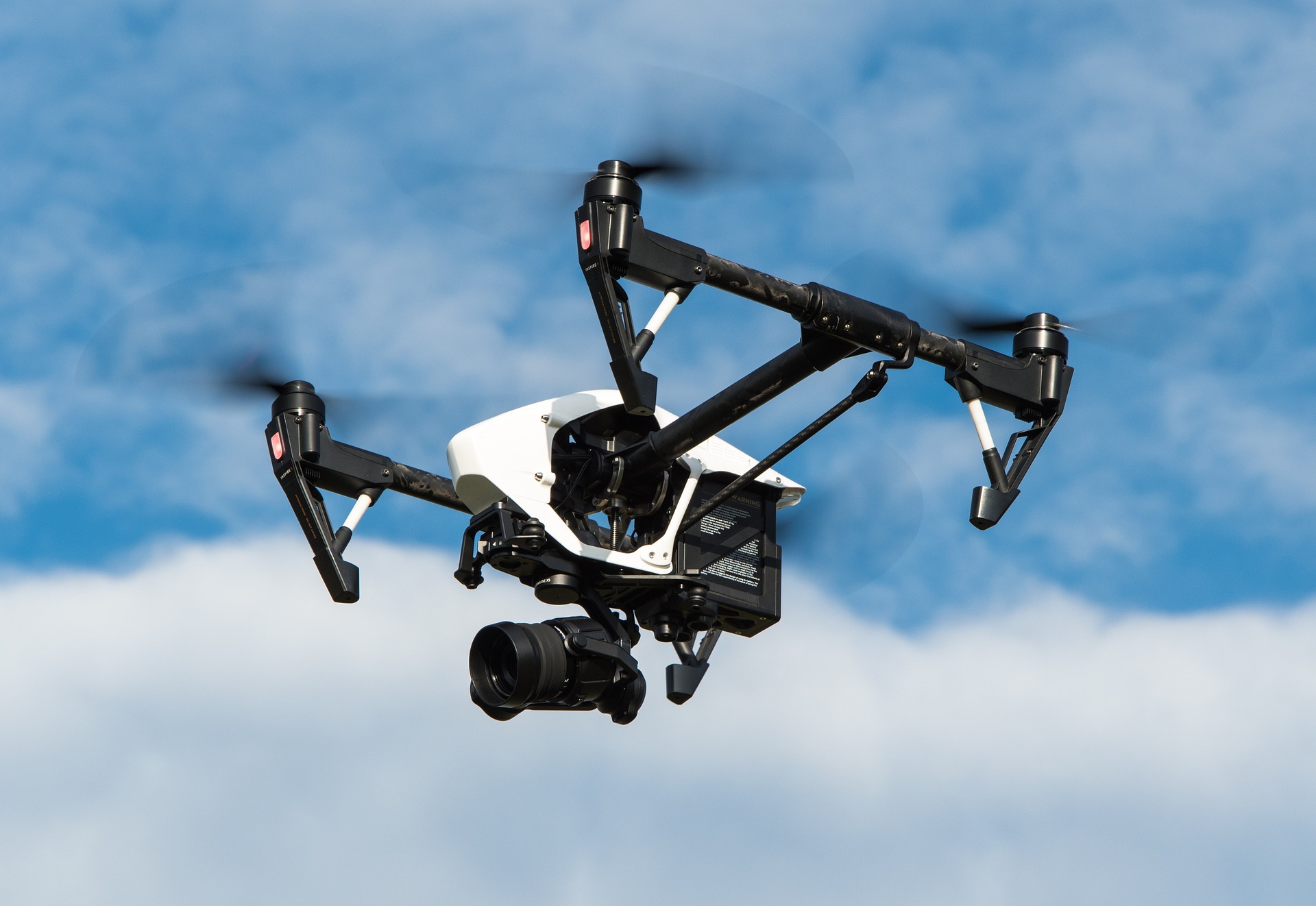Lesson Focus: Vocabulary
(1) Read the article while labelling the parts of the drone.
(2) Check your dictionary to confirm if you labelled correctly.
(3) Complete the activities.
Drones can be lots of fun and add amazing photographic and video recording opportunities that used to only be possible with helicopters. To be honest, drones are simply tiny helicopters without people on them, which allows them to be tiny and cheap. This drone is used for taking pictures and videos, as most drones are. Let’s talk about the main parts of drones and how they work.
We have to start with the propellers. These are what make the drone fly. The propellers, also called rotors, spin super fast and push the air down. As they push the air down, they lift the drone up. Most drones have four propellers getting them the name “quadrocopters”, “quadro” meaning “four” and “copter” coming from the word “helicopter”.
The propellers are connected to the body by the drone’s frame. Frames are the structure of the drone. Frames have to be strong and rigid, so it doesn’t bend and fly inconsistently, but extremely light. The downward pushing that the propellers make on the air has to be transferred to the body consistently so the drone doesn’t wobble in the air. Frames also have to hold the wiring that goes from the propellers to the computer. If you have the wires outside, they are more likely to get damaged or caught on things, but if the are contained within the frame, they are safe.
The body is where almost everything else is. It has to hold a few very important parts and protect them if the drone crashes, and high-quality drones protect the insides of the body from rain, too. Like the frame, the body must be strong but lightweight. It doesn’t have to be rigid like the frame because the parts inside the body don’t move like the propellers. Drone bodies are usually plastic, but on the bottom, some have a metal piece to hold the camera, like this one. This is called the camera mount. Drones with camera’s built into the body don’t have as much control over the camera and can only look forward. While moving the camera moves with the drone exactly as the drone moves, including tilt. If the camera is mounted to the bottom, it can control the camera separate from the drone, so if the drone is moving forward and tilted forward, the camera can keep looking straight. If the drone is rotating, it can keep the camera stationary.
The guts contained inside the body are crucial. Of course there is a battery. This is what gives energy to the propellers to spin, but unlike helicopters, the body doesn’t contain a motor. Each propeller has it’s own tiny motor right beneath it, between it and the frame. The battery gives power to each of the motors through a wire. There’s also a computer in the body. It has to carefully control the flight of the drone. It gathers information from some sensors around the drone, on the frame, in the body, or both, and then tells the propellers how fast to spin. The sensors can feel if the drone is flat, tilted, moving, in the air, and usually where it is in the world through GPS. One of the sensors receives signals from the remote.
The remote is not part of the drone. It’s what you hold to tell the drone what to do. Sometimes you don’t need a remote but just use an app on your phone instead. The remote has buttons and switches and joysticks and dials and all sorts of other things to control the drone. Really nice ones have screens that show you what the drone sees, and you can fly it as if you are inside of it! If you have a smart drone, you can give the drone orders, like hover, which is stationary flying, to fly in the same spot without moving; return-to-home, which makes the drone come back to you; take off, which is to leave the ground and start flying; land, which means to stop flying and come back to the ground; or other cool things like taking videos while flying in certain ways for filming great shots. If you don’t have a smart drone, you will have to learn how to do each of these by yourself by using the controls on the remote.
It takes a long time and lots of practice to get good at flying drones, but it can be very rewarding because the hard work pays off, and you can enjoy giving your drone orders like you are captain on a plane. You can take beautiful pictures and amazing videos from placing you can’t normally take them from, like flying off a cliff and looking back at you, and you can see things that you normally don’t get to see, like the underside of a bridge. Drones can be lots of fun, but are also quite dangerous, so always be careful and make sure you know what you are doing before you try anything difficult!

